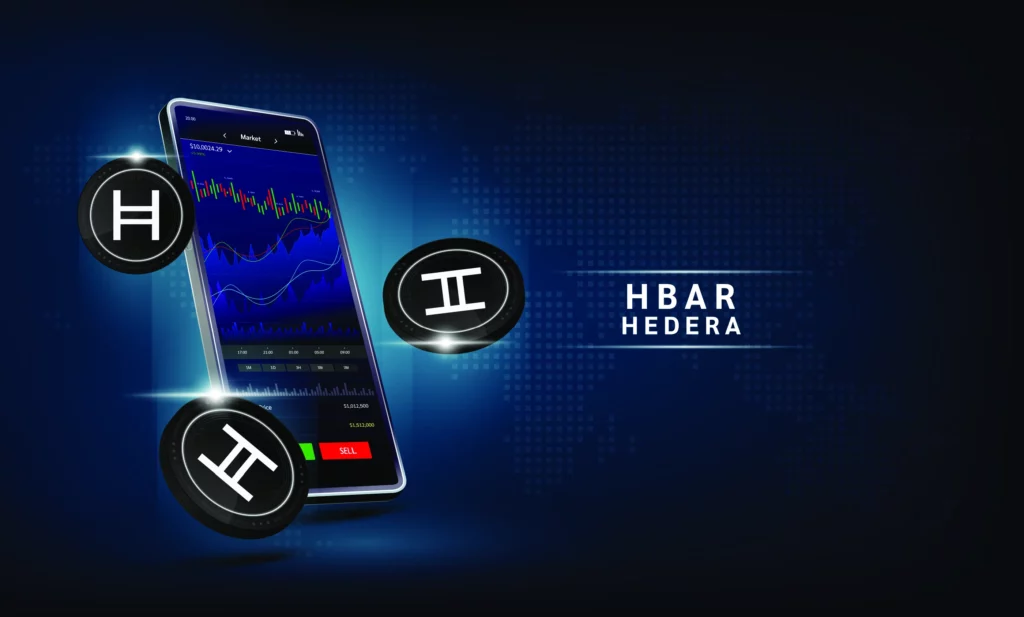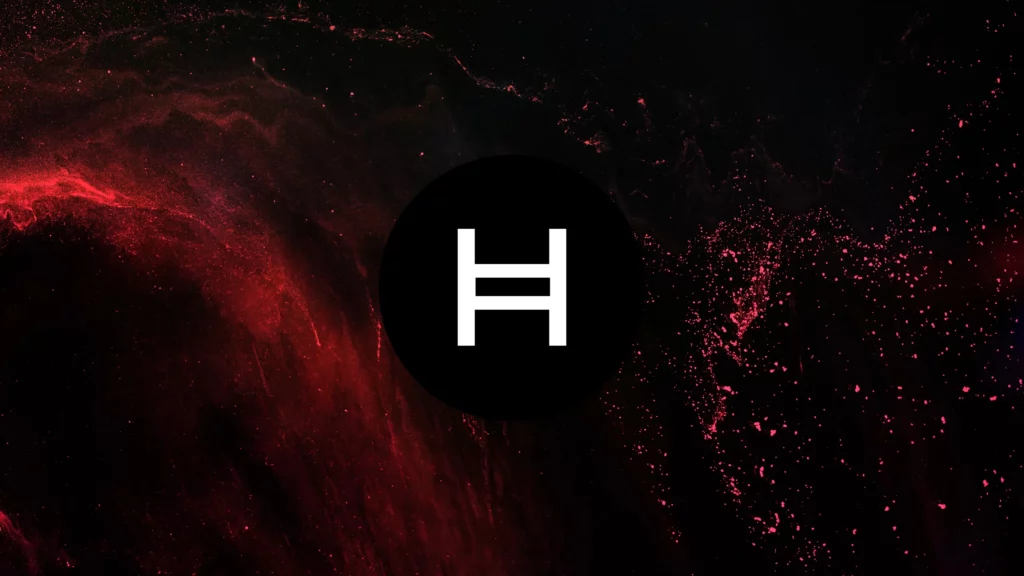Public blockchain and distributed ledger technologies have ushered in a new era of the web — we now have infrastructure that enables programmatic trust in online environments between individuals, organisations, corporations, and governments. This technology has the potential to assist nearly every industry, including financial services, healthcare, social networking, supply chain, renewable energy, and others. With the increased adoption of public distributed ledgers and, more specifically, proof-of-work mining currently used by Bitcoin and Ethereum, the industry is obligated to consider the imminent threat of unsustainable energy consumption and environmental consequences.
So, What Exactly Is Hedera?

The Hedera network’s underlying technology, the energy-efficient hashgraph algorithm, and proof-of-stake consensus mechanism have laid a solid foundation for relatively sustainable network operations.
Hedera Hashgraph passed the number of Ethereum (ETH) transactions on May 6, 2021, making it one of the world’s most extensive cryptocurrency networks. In theory, Hedera Hashgraph could process more than 100,000 TPS, allowing it to rival Visa and other mainstream payment systems. Hedera is a public distributed ledger for developing and delivering decentralised apps and microservices. You may leverage Hedera’s network services–Consensus, Tokens, Smart Contracts, and File Service–atop the hashgraph consensus algorithm to develop applications with high throughput, fair ordering, and low-latency consensus finality seconds without relying on centralised infrastructure.
How Hashgraph Protects the Environment
Hedera’s new technology, hashgraph instead of blockchain, makes the Hedera network faster and cheaper and acquires less energy per transaction than other crypto networks. Additionally, Hedera is ABFT, the highest level of security possible for a DLT, unlike Bitcoin, Ethereum, or Solana. Hedera Hashgraph has prioritised environmental sustainability and is formally committed to running a carbon-negative network by purchasing quarterly carbon offsets in quantities established by the third-party assessment service Terrapass. Terrapass’ verification report certifies the carbon recovered by the Lebanon Refuse Authority Landfill Gas Collection and Combustion Project.
Hedera Hashgraph
Hedera Hashgraph is another public distributed ledger developed by Leemon Baird; it goes beyond blockchain in creating fast and secure applications. It provides all the advantages of blockchain and a better consensus mechanism without limitations. Hedera hashgraph is built on a graph-like structure in which all nodes communicate with one another and report their communication by forming a graph of links. All of the data is kept in hashes that describe specific occurrences. The selected consensus approach includes Gossip about Gossip and Virtual Voting. All information shared by each node on the network relative to which node, when, and with whom it communicated is exchanged in the Gossip about Gossip protocol. On the hashgraph, each device shares its data. All transactions completed on the hedera hashgraph network are available in chronological order. Each node is aware of the other node’s choice and may forecast in advance without the requirement for active, effective decision voting, in which all of the nodes’ votes are predicted in advance.
These consensus algorithms consume little bandwidth and may execute thousands of transactions per second in a single shard (fully connected, P2P mesh of nodes). Latency is expressed in seconds. The Hedera hashgraph has the following features.
- Efficiency: In hashgraphs, energy-intensive proof-of-work is avoided. Custom mining rigs are not purchased; instead, they can run on existing hardware. Hashgrap is incredibly quick and efficient, with just a little overhead over the available bandwidth.
- Security: The transactions are digitally signed, the connection is secured using TLS 1.2, and the hashgraph is built using cryptographic hashes. The hashgraph is tolerant of asynchronous byzantine faults. Any member cannot obstruct community consensus. Once achieved, the consensus cannot be modified. Hashgraph is immune to distributed DoS attacks against the consensus method and achieves theoretical security constraints set by aBFT.
- Governance: The hedera network is governed by 39 global corporations. These businesses are responsible for adding creative experience in process and business skills lacking in public ledger platforms. This governance model protects network users by lowering the risk of forks, ensuring the codebase’s integrity, and allowing open access to the underlying software code. All governing members have equal voting rights and must serve for a limited time. Permissionless or open consensus is used.
- Stability: The stability of this platform is ensured by both legal and technical controls.
- Regulatory compliance: Users and developers are provided with certified binding identities to otherwise pseudonymous Hedera network accounts in the hedera technical framework, including an opt-in verified identity mechanism.
Hedera Security

All Hedera network communications are encrypted with TLS 1.2, digitally signed transactions, and the hashgraph is constructed using cryptographic hashes. The algorithms and key sizes were chosen to comply with the CNSA Suite security standard. It requires AES-256, RSA 3072, SHA-384, ECDSA, ECDH with p-384 and ephemeral keys.
The hashgraph algorithm is asynchronous Byzantine Fault Tolerant (aBFT). It is a technical term meaning that no single node (or small group of nodes) can prevent the network from reaching consensus, nor can they change the consensus once it has been reached. Each Hedera network node will eventually reach a point where it “knows” that the network has reached a consensus. Blockchain platforms do not guarantee Byzantine agreement because a node never reaches certainty that agreement has been achieved. Instead, there is just a probability that increases over time. Blockchain is also non-Byzantine because it does not automatically deal with network partitions. For instance, if a group of miners is isolated from the rest of the internet, multiple chains (“forks”) could grow that conflict with each other the order of transactions.
The hashgraph is ACID compliant. ACID (Atomicity, Consistency, Isolation, Durability) is a database term and applies to the hashgraph when used as a distributed database. A network of nodes uses it to reach a consensus on the order in which transactions occur. Further, In a DLT network, a DDoS attack could target the nodes that contribute to the definition of consensus and, potentially, prevent that consensus from being established. The hashgraph is DDoS resilient as it empowers no single node or a small number of nodes with special rights or responsibilities in establishing consensus.
Total HBAR (Cryptocurrency) Supply
HBAR, the Hedera blockchain’s cryptocurrency, has a current released supply of over 21 billion HBAR and a fixed supply of 50 billion HBAR. It is a decentralized public network used for in-app payments, micropayments, transaction fees, and network protection. The Hedera network is available for any application to be built on top of it. It must be noted, however, that instead of being a block’ chain, Hedera is more of a graph. It’s based on a Directed Acyclic Graph (DAG), which means that the speed of transaction verifications increases as more transactions are added to the network.
The Future of Hedera

It is critical to understand that unlike a regular DLT or blockchain Hedera Hashgraph is specifically a data information and consensus algorithm that, much like market sentiment, adopts concepts such as gossip, about gossip, and virtual voting to achieve faster and secure transactions. It also claims to overcome the gaps left by blockchain, and on top of it all, its peer-to-peer platform eliminates the need for complete transactional operations. Combining these benefits, especially with a focus on sustainable networks and efficient processing, Hedera is undoubtedly one to watch.









